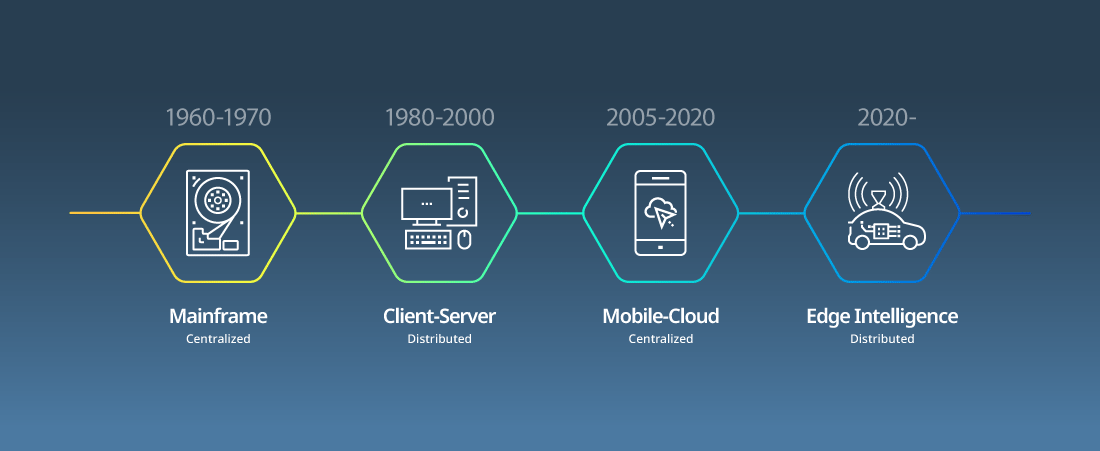The Dawning of the Edge: How Decentralization and Edge Computing Reshape the Digital Landscape.
The way we interact with data is undergoing a fundamental shift. Cloud computing, while hugely influential, is no longer the sole answer. Edge computing, processing data closer to its source, is emerging alongside a growing emphasis on decentralization. This dynamic duo holds the potential to revolutionize industries, enhance privacy, and usher in a new era of distributed computing.
Centralized Clouds Reaching Their Limits:
Cloud computing has empowered businesses with scalability, flexibility, and access to powerful computing resources. However, as data volumes explode and applications become more real-time, limitations become apparent:
- Latency: Data traveling long distances to central cloud servers can introduce latency, hindering real-time applications like autonomous vehicles or industrial automation.
- Bandwidth Bottlenecks: The ever-increasing data traffic can strain internet bandwidth, impacting performance and user experience.
- Security Concerns: Data centralization creates a single point of vulnerability for cyberattacks.

Enter Edge Computing: Processing at the Periphery
Edge computing addresses these limitations by processing data closer to its source, on devices at the "edge" of the network. This offers several advantages:
- Reduced Latency: By processing data locally, edge computing eliminates the need for long-distance data transfer, significantly reducing latency.
- Improved Efficiency: Local processing reduces the load on central servers and network bandwidth, optimizing resource utilization.
- Enhanced Security: Distributing data storage and processing across multiple edge devices minimizes the risk associated with centralized data breaches.
Decentralization: Power to the Periphery
Decentralization complements edge computing by promoting a distributed computing model. Data is not stored in a single central location but distributed across a network of devices or servers. This fosters several benefits:
- Increased Resilience: Decentralized systems are more robust against outages or attacks, as there's no single point of failure.
- Greater Transparency: Decentralization can promote transparency by allowing users more control over their data and how it's used.
- Empowering Users: Decentralized platforms can empower users to participate in the network and potentially monetize their data.

The Synergy of Edge and Decentralization:
When combined, edge computing and decentralization create a powerful synergy:
- Real-time Applications Unleashed: The low latency of edge computing empowers real-time applications like autonomous systems, augmented reality, and the Internet of Things (IoT) to reach their full potential.
- Enhanced Security in a Distributed World: Decentralization mitigates the risk of data breaches inherent in centralized systems while edge computing strengthens overall network security through distributed processing.
- Scalability for the Future: Edge computing and decentralization can accommodate the ever-growing volume of data generated by a connected world.
Industries Poised for Transformation:
Several industries stand to benefit significantly from the combined forces of edge computing and decentralization:
- Manufacturing: Edge-based analytics can optimize production processes, predict equipment failures, and enable real-time quality control.
- Healthcare: Decentralized medical records can improve patient care coordination, while edge computing can power real-time monitoring and diagnostics.
- Finance: Faster data processing at the edge can facilitate high-frequency trading and fraud detection.
- Media and Entertainment: Edge computing can enable seamless content delivery and personalized experiences for users.

Challenges and Considerations:
Despite the potential, challenges remain:
- Standardization: The lack of standardized protocols for edge computing and decentralized networks can hinder interoperability.
- Security Concerns: Securing a vast network of edge devices necessitates robust security measures to prevent vulnerabilities.
- Privacy Considerations: Decentralization necessitates clear regulations and user education regarding data ownership and privacy in a distributed environment.
Conclusion: A Distributed Future Beckons
The convergence of edge computing and decentralization represents a significant paradigm shift. By processing data closer to its source and distributing power across the network, we can unlock a future with faster, more secure, and user-centric applications. While challenges exist, addressing them through innovation, collaboration, and a focus on security and privacy can pave the way for a more distributed and empowered digital landscape.






























